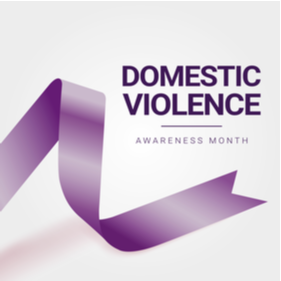Domestic Violence: Breaking The Cycle

October 2021 marks the 34th-Anniversary of Domestic Violence Awareness Month. However, even after nearly three and a half decades of national acknowledgement, domestic violence remains an insidious phenomenon that plagues the lives of many families on a daily basis.
Many people who experience domestic violence have also knowingly—or unknowingly—seen it occur throughout their childhood. Domestic violence is defined as a pattern of behaviors used by one partner to maintain power and control over another partner in an intimate relationship. Though it sounds easy enough to understand, domestic violence is akin to a chameleon – taking on different colors and forms from one relationship to the next.
In one relationship, domestic violence may be physical abuse where one partner uses physical violence to instill fear in their partner such that they feel disempowered to leave despite their suffering; in another relationship, domestic violence may take shape as emotional abuse and isolation where one partner forces the other away from their family and friends, surveils their every move, and constantly cheapens that partners value or worth in the relationship through a series of mind games. No matter what form it may take, there is always light at the end of the tunnel.
As we near the 20th month since the COVID-19 pandemic forced the world indoors, it cannot go unnoted that instances of domestic violence have increased dramatically as a result of the shutdown. That being said, it is important to remain vigilant, and to take notice of the signs that you may be in a relationship that has domestically violent tendencies. Here is a list of questions to ask yourself and corresponding actions you may take to protect yourself from harm:
1. Does your partner control where you go and who you are able to see?
Its undeniable that smartphones have become standard personal devices that can track our location across the globe. If your partner requires you to disclose your location at any given time for their own personal satisfaction, or if they consistently question you about who are with or where you are going, you may be a victim of domestic violence. Consider whether you fear denying your partner that access will lead to any aggression or violence. If so, seek guidance from a trusted family member, friend or therapist about an escape plan.
2. Does your partner limit your access to household finances or prevent you from having your name on a lease or mortgage?
Across many cultures money equates to power and respect. The same can be said about the dynamics of some intimate partner relationships. If your partner conceals their finances from you or has sought to be the primary leaseholder/mortgagee on your home, you may be in a power struggle. Consider whether your partners actions make you feel insignificant or inconsequential. If so, you may want to reconsider moving forward with any contractual obligations (i.e. signing a lease, or making any joint investments) that may tie you to and/or normalize that dynamic. The more investments you share, the harder it may be to pull away from (1) your obligations, and (2) any economic abuse you have experienced as a result.
3. Does your partner use social media to attack you when you have upset them?
Social media is an outlet like none other, which can be used to capture our happiest moments. Nevertheless, social media can also be used as a weapon to bully and to further put domestic violence victims in their “place.” If your partner has ever rallied people against you via social media or surreptitiously gained access to your social media as a means of conducting oversight over you, you may be in the throws of new-age domestic violence. Consider whether your partner has asked for your log-in credentials or otherwise appears to use social media to make subliminal messages against you. If so, you may want to consider changing your social media passwords or deactivating your accounts to protect your mental health.
We all may be the villain in someone’s story, but that does not make any instances of domestic violence you may experience your fault. Start by confiding in those closest to you and building a support system that can protect you on your darkest days. The courts can also provide safety by means of protective and/or stay away orders. Understandably, if you have a fear of retribution for filing a protective order against your abuser, you must remember that you are not alone and that you must make the best decision for your future.
Otherwise, if you, or someone you know, is a target of domestic violence, reach out to the National Domestic Violence Hotline online or at 1-800-799-SAFE (7233).
REMEMBER: People are here to help. You can break the cycle.
